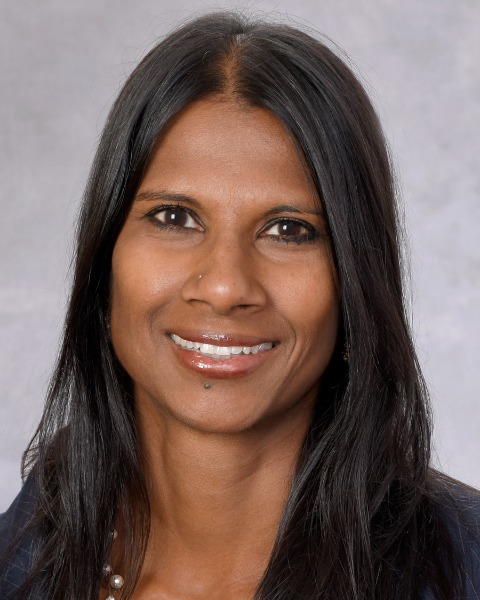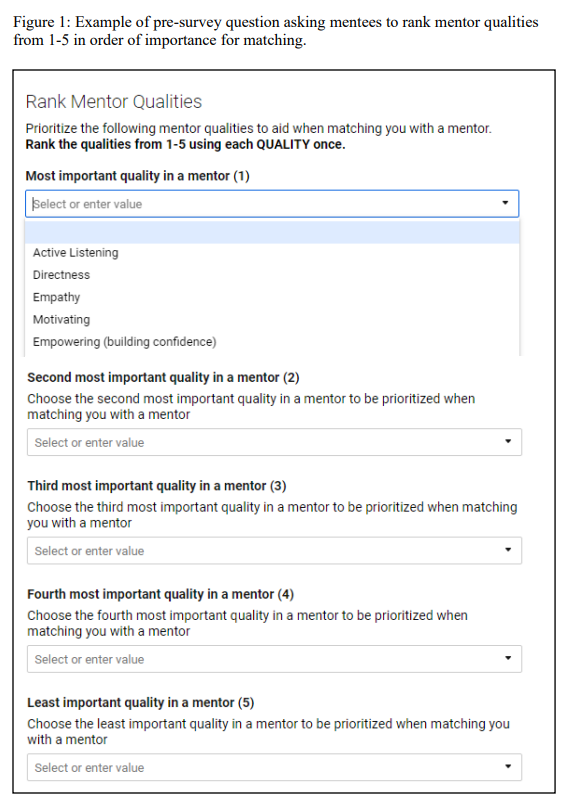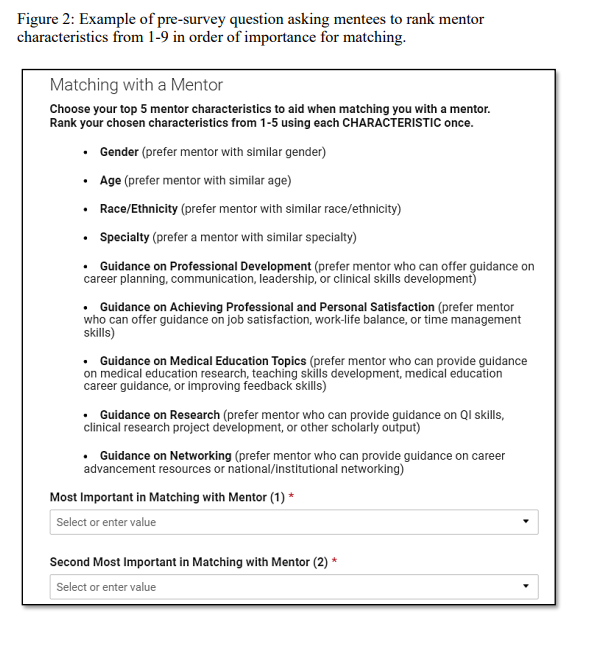Hospital Medicine 4: Medical Education
Session: Hospital Medicine 4: Medical Education
164 - Swipe Right! Enhancing PHM Faculty Mentorship through a Matching Algorithm
Sunday, April 27, 2025
8:30am - 10:45am HST
Publication Number: 164.6554
Sandra Gage, Phoenix Children's Hospital, Racine, WI, United States; Vasudha L.. Bhavaraju, University of Arizona College of Medicine - Phoenix, Phoenix, AZ, United States; Reina Patel, Phoenix Children's Hospital, Phoenix, AZ, United States

Vasudha L. Bhavaraju, MD, MEd (she/her/hers)
Chief Medical Education Officer
Phoenix Children's Hospital
Phoenix, Arizona, United States
Presenting Author(s)
Background: Intentional pairing of mentors and mentees is vital for a positive relationship. Self-selection, matching by program leaders, and electronic matching software have been trialed in medical education with varied utility; but there are few studies about mentor/mentee matching amongst clinical faculty, especially in pediatric hospital medicine (PHM). In response to faculty needs, we initiated a structured mentorship program with a mentor-mentee match process to promote pairing success.
Objective: To determine if a mentor-mentee matching algorithm for PHM faculty led to participant satisfaction and pairing success.
Design/Methods: Potential PHM faculty mentors completed a survey on demographics, professional qualifications, and personal qualities. Faculty mentees’ survey included professional needs, preferred mentor personal qualities, and career focus. To facilitate pairing, mentees ranked the importance of mentor qualities and characteristics (Figures 1, 2). Mentee requests and mentor qualifications were cross matched manually in Excel (cohorts 1-2) and electronically in Smartsheet (cohort 3). Top mentor matches per mentee were identified. Program leaders used personal knowledge of faculty to refine choices and offered 3 mentors to each mentee for final selection. One mentor was identified outside of the algorithm due to understated qualifications on his pre-survey. Participants completed post-program surveys and data were analyzed by response frequencies.
Results: Ten mentor-mentee pairs were matched through 3 cycles (2021-2023). The process to match 3-4 pairs manually in cohorts 1-2 averaged 3.5 hours but was streamlined to 3 pairings in 2 hours using electronic filtering in cohort 3. Nine dyads completed the program; one withdrew for personal reasons. Nearly all participants felt their matches were a “good fit;” average scores 4.67 (mentors) and 4.56 (mentees) on Likert scale 1=strongly disagree and 5=strongly agree. Mentees stated that mentors’ common interests, similar personality traits, matched qualities, and skills to advance career goals was opportune. Notably, 78% of mentors and 83% of mentees planned to continue to meet informally beyond the 1-year program commitment; 2 mentors were unsure, and 1 mentee cited personality differences for not continuing.
Conclusion(s): Our process of matching PHM mentors and mentees using participant ranking of qualities and qualifications to augment personal knowledge of faculty led to successful mentorship pairings. The automated, efficient algorithm employed available software. Future studies will refine survey questions to further streamline the match process.
Rank Mentor Qualities
 Figure 1: Example of pre-survey question asking mentees to rank mentor qualities
Figure 1: Example of pre-survey question asking mentees to rank mentor qualities from 1-5 in order of importance for matching.
Matching with a Mentor
 Figure 2: Example of pre-survey question asking mentees to rank mentor
Figure 2: Example of pre-survey question asking mentees to rank mentor characteristics from 1-9 in order of importance for matching.
Rank Mentor Qualities
 Figure 1: Example of pre-survey question asking mentees to rank mentor qualities
Figure 1: Example of pre-survey question asking mentees to rank mentor qualities from 1-5 in order of importance for matching.
Matching with a Mentor
 Figure 2: Example of pre-survey question asking mentees to rank mentor
Figure 2: Example of pre-survey question asking mentees to rank mentor characteristics from 1-9 in order of importance for matching.

